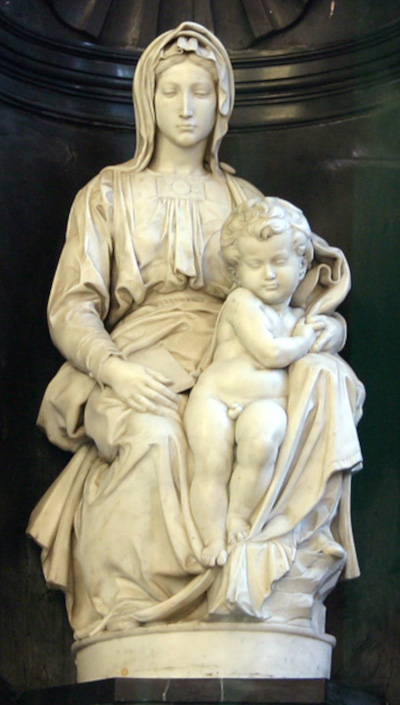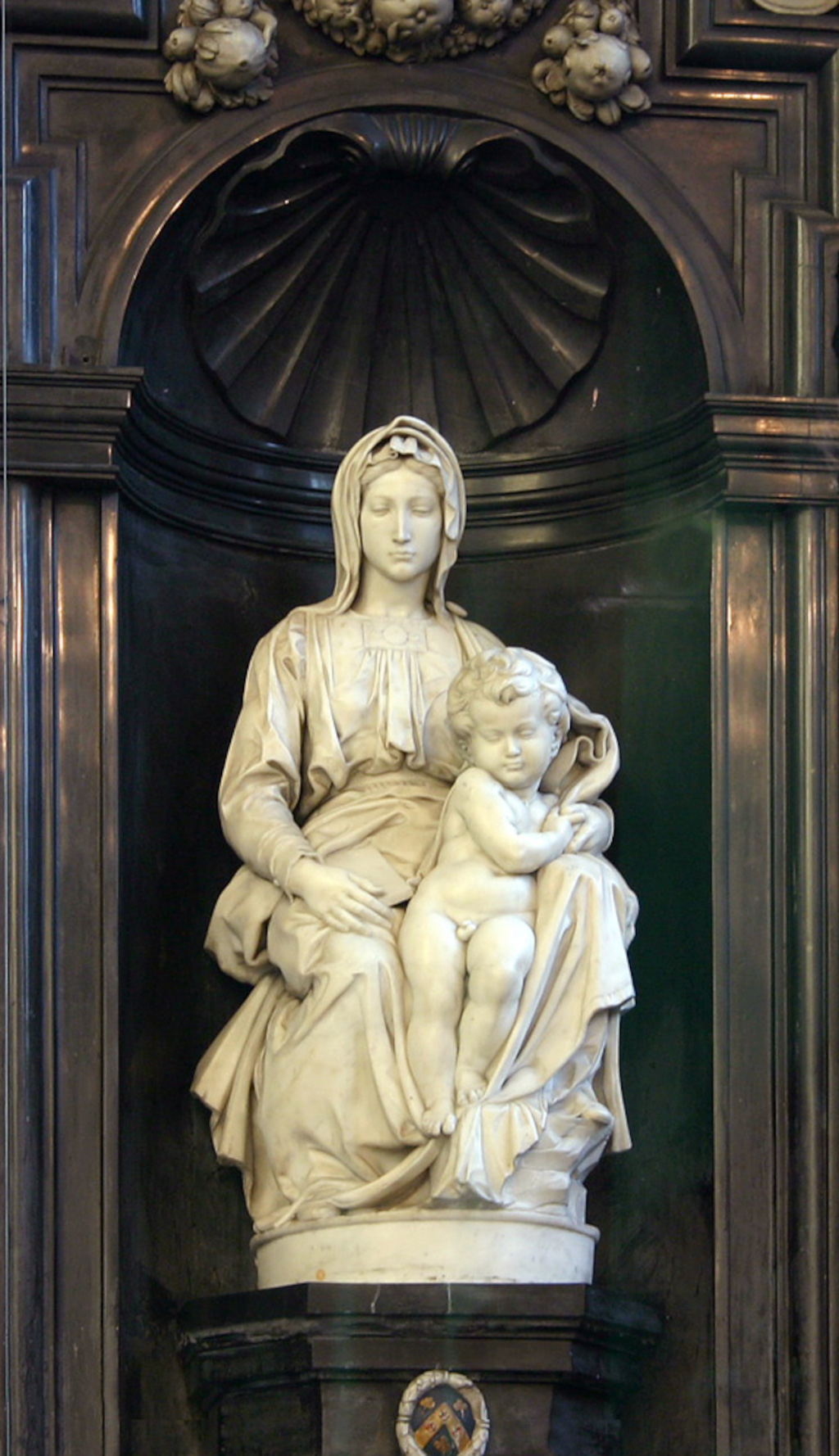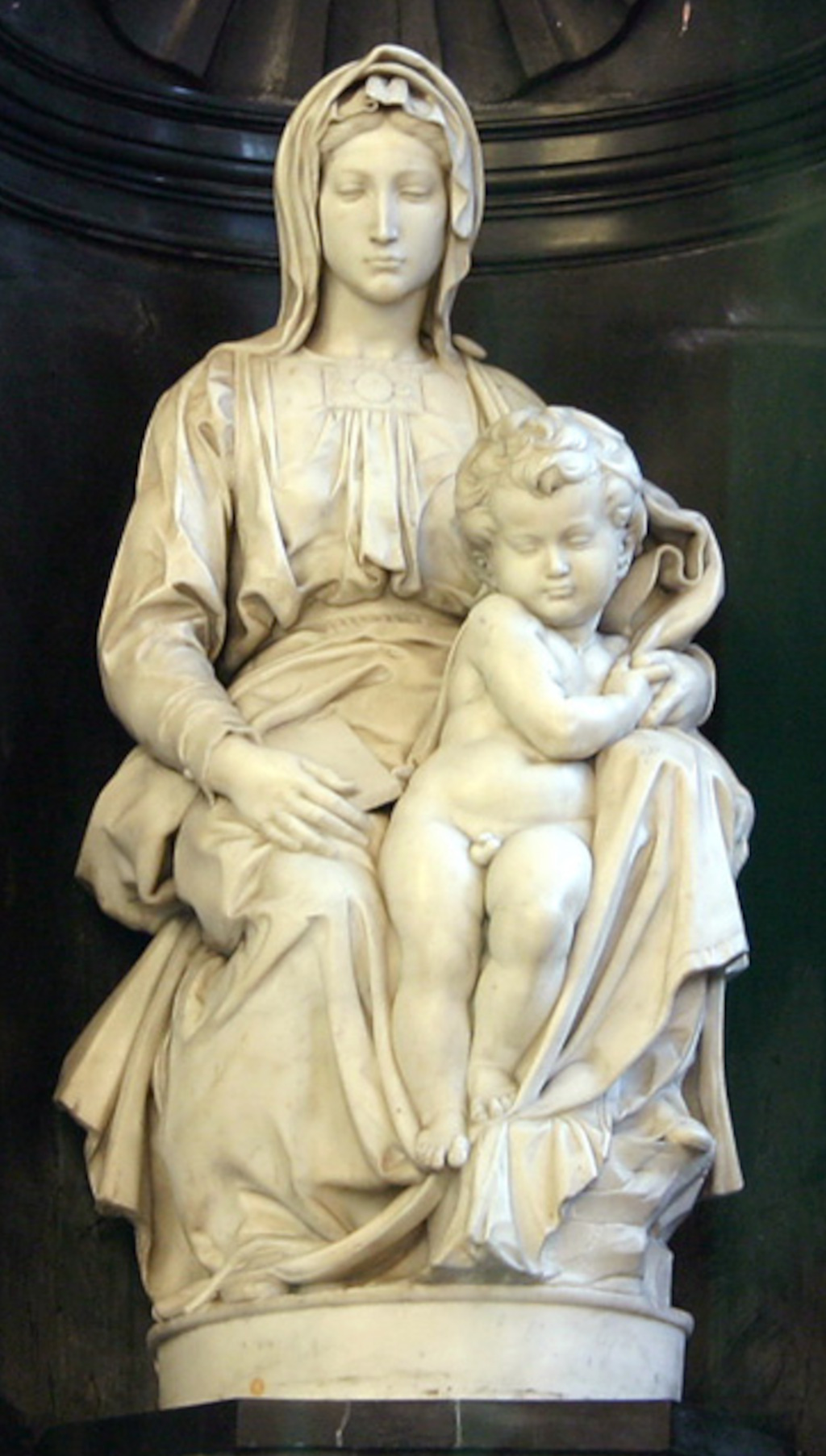Introduction
This sculpture by Michelangelo was the first from his career to be sold abroad, and has lived an interesting life since then. Having been stolen twice by occupying forces, Madonna of Bruges has thankfully been returned to its rightful home. This sculpture bears some stylistic similarities with another key item from Michelangelo's oeuvre, namely Pieta, and also offers a divergence from other artist's work on this theme.
Many theories have been put forward about various meanings potentially added by the artist within this work, but the most widely accepted is of how he avoids the two figures looking into each other's eyes, and how that is a particularly notable element of this design. Michelangelo thus avoids replicating the same mother to child atmosphere as generated by most other sculptors within the Renaissance.
Technically, this sculpture is highly impressive. The touches of drapery are complex and considerable, ensuring that the artist must have spent considerable time and care in extracting such detail from a single block of marble. Madonna of Bruges remains amongst Michelangelo's most famous sculptures of all.
Table of Contents
- Introduction
- Description
- Provenance
- Michelangelo's Study Drawings of the Virgin and Child
- Timeline
- Comparison with Pieta
- Purpose
- Size, Medium and Location
- Large Image of Madonna of Bruges
- Bibliography
Description
Michelangelo's Madonna of Bruges features both figures looking directly towards the viewer, with the young child leaning on his mother's left leg. The child is undressed, and has his hands clasped together as he supports his weight upon his mother's thigh.
There is not the connection between the two figures in this sculpture as found in other interpretations of the Madonna and Child. Other artists chose to direct their gazes at each other, bringing the emotional bond between a mother and child.
Michelangelo would have spent considerable time on the Madonna's clothing, with a complex arrangement of drapery covering the majority of her body. She wears a long dress which rolls over at the bottom, and also wears a hood that covers most of her hair.
The child's hair has grown out, with curls added by the sculptor. This helps us to better estimate his age within this piece, as well as in judging his height as compared to his mother. She is depicted as relatively youthful, with a narrow chin and delicate facial features.
The two figures are placed onto a round marble mound, which was then put on top of a dark wooden stand for its present location in Bruges, at the Onze Lieve Vrouwekerk. It has, however, been displayed in a variety of ways in the years that have passed since it was first completed in the early 16th century.
Provenance
Michelangelo completed the Madonna of Bruges in 1504, at the latest, and soon afterwards it was purchased by Giovanni and Alessandro Moscheroni (scholars have suggested the sale was made in either 1505 or 1506). They were wealthy businessmen based in the city of Bruges who had made their money in the clothing trade.
The sculpture's relocation to this prosperous city then led to it becoming known as the Madonna of Bruges, in order to differentiate the piece from all of the other interpretations of this theme found within Michelangelo's oeuvre, as well as the Renaissance more generally.
When was the Madonna of Bruges Stolen?
Since being purchased by the Moscheroni clothing merchants of Bruges in the early 16th century, the piece would twice be stolen, or at least transferred under duress. Thankfully, in both cases, the item would then later be returned and today enjoys a safer existence, thanks to the relative peace found in modern-day Western Europe.
In the late 18th century French forces invaded what was then known as the Austrian Netherlands and immediately ordered the sculpture to be sent to Paris. Around two decades later, their defeat allowed the sculpture to be returned to Bruges.
During WWII, many years later, German forces stole the piece whilst retreating and it was later discovered in a mine in Austria. These would be two of the many examples of how historic art has suffered from political instability, normally because of its high perceived value and the ease with which it can be smuggled elsewhere.
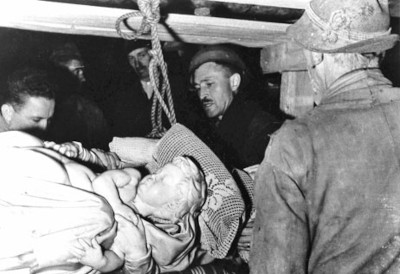 Madonna of Bruges Recovered in Austrian Salt Mine
Madonna of Bruges Recovered in Austrian Salt Mine
Michelangelo's Study Drawings of the Virgin and Child
Michelangelo produced a large number of sketches around the theme of the Virgin and Child. The item displayed below, found in the collection of the Graphische Sammlung Albertina, Vienna, dates to around 1503 and features the child displayed in a similarly up-right fashion. The majority of his sketches on this topic actually came after the Bruges sculpture was completed.
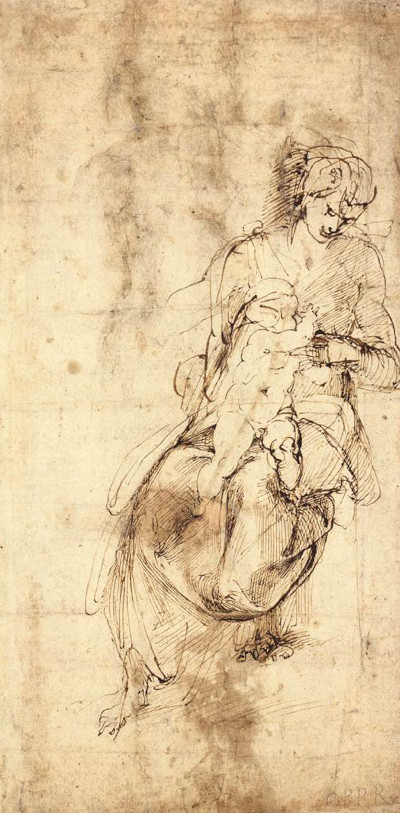 Virgin and Child Study Drawing
Virgin and Child Study Drawing
The identification of a number of study sketches as preparation for the final sculpture has brought new evidence to art historians in dating the Bruges Madonna. Some of the sketches had work for other projects on the reverse, giving further clues as to how this piece fitted into Michelangelo's timeline. It's sale abroad fairly soon after being completed prevented a number of art experts from examining and documenting the piece at the time, but there remains little doubt over its attribution or its approximate date. Any further research could look into its intended purpose.
A number of scholars have attempted to discover similar formats, in which the child stands almost vertically, between the legs of his mother, and simply leaning on her. Studies of related sculptors from the previous one hundred years or so have not thrown up any similar examples, making it hard to discern where Michelangelo's inspiration for this layout came from. One might conclude that his own extraordinary imagination was the source, and that some of his earlier drawings are evidence of these ideas evolving in the very early 16th century.
Timeline
In order to better understand how the Bruges Madonna came about, it is worth placing the project within the context of Michelangelo's oeuvre. The list below orders his output at around the turn of the century, including a number of sculptures which came before and after this piece. Typically, the artist would work on several projects at the same time, and so the list should not be taken as a linear survey of his artistic focus.
- 1498-1499 - Pieta
- 1501-1504 - Four Saints of the Piccolomini Altar
- 1501-1404 - David
- 1501-1505 - Bruges Madonna
- 1504-1506 - Taddei Tondo
- 1504-1506 - Pitti Tondo
- 1506 - St Matthew
Comparison with Pieta
On viewing the Bruges Madonna, one immediately will recognise a number of similarities with Michelangelo's Pieta. The two works cover similar themes and also were completed just a few years apart, and so these connections should not surprise us. Most obvious is the Madonna herself, who is depicted as youthful in both pieces, even though Jesus is much older within Pieta.
The angle of her head, too, is much the same, as she looks down and avoids eye contact with her son. Additionally, we find huge layers of material which roll over one-another, in a complex arrangement of drapery. This was one of the many artistic techniques that Michelangelo mastered successfully, and he felt obliged to make use of it within his sculptures.
The rolls of material found upon the Virgin's dress also allows light to reflect and shadow in a multitude of ways. This helps to bring the third dimension out of each piece, rather than simply producing marble alternatives to his paintings. Looking more closely at Mary, her facial features, way beyond just being of a similar age, are also consistent, with an oval shape, smooth skin, a long, narrow nose and small, delicate eyes and lips.
Purpose
The original purpose of the Madonna of Bruges has never been confidently determined. It is perhaps the one area of our knowledge around this piece that still required further research. Many theories have been put forward around where the intended location for the sculpture was to have been when Michelangelo first started to plan and sculpt the piece. Some have argued that the piece was meant to be displayed at the Piccolomini Altar in Siena, Italy, but many more believe that its present day location was entirely as intended.
The clothing merchants who commissioned the piece were based in Bruges but did considerable trade with various locations in Italy, and even set up a number of offices within the country in order to facilitate this. They were, therefore, well acquainted with the country and perhaps grew fond of its impressive cultural offering at that time. Their own region of Northern Europe was also rich in painting and sculpture at that time, reminding them of the importance of these items within society more generally, as well as enabling them to appear virtuous by displaying a strong commitment to their Christian religion.
Size, Medium and Location
Michelangelo's Madonna of Bruges is precisely 94 cm tall, or 128 cm when including the base. It was made from a single block of Carrara marble, and was created by the sculptor over the period of 1501-1505, though Michelangelo would not have been working exclusively on this project during that time. The majority of scholars have dated the piece towards the end of that five year period.
Carrara marble has been a popular choice with Italian sculptors for centuries, and its name is derived from the city of Carrarra, as it is in this region of Italy that most of this rock has been quarried. It tends to be white or blue-grey in tone, with sculptors tending to much prefer the whiter, purer type. It has been said that the white Carrarra marble is particularly strong and therefore suitable to intricate sculptured detail, but this form of the stone is now almost entirely gone, due to this popularity.
The sculpture today resides at the Onze Lieve Vrouwekerk, which is based in the historic Belgian city of Bruges. During the time of Michelangelo, Bruges was actually amongst the richest cities in Europe, boasting considerable levels of trade right across the continent. Wealthy patrons within Northern Europe were also starting to look to Italy for suitable artworks to add to their growing collections.
Which other Sculptures are Housed at the Onze Lieve Vrouwekerk?
The Onze Lieve Vrouwekerk, meaning Church of Our Lady, celebrates the wealth and success of the city of Bruges over the centuries. Michelangelo's sculpture is just one of many notable artworks to be found here, helping to create a cultural rich environment which illustrates the brilliance of European art and architecture of past centuries.
Crucifixion by Anthony van Dyck from around 1626 resides within the church, as does a depiction of the Supper at Emmaüs, which was believed to have been from the oeuvre of Caravaggio for a number of years. There is also a depiction of the Deposition of the Cross which possibly came even earlier and is likely to have been produced in the low countries.
Large Image of Madonna of Bruges
We have added a larger image of Michelangelo's Madonna of Bruges below. This will help you to appreciate more of the detail added by the sculptor back in the early 16th century. There is no real substitute for seeing the item in person, where the piece can be viewed from multiple angles, revealing the complex balance of light across its many contours, but these images are the next best option for those unable to travel to Bruges. The image is courtesy of Wikimedia, under the Creative Commons Attribution-Share Alike 3.0 Unported, and was submitted by Elke Wetzig (elya), though we have slightly cropped and resized the image.
Madonna of Bruges, 1501-1504 by Michelangelo, Madonna and Child; Elke Wetzig (elya), CC BY-SA 3.0, via Wikimedia Commons
Bibliography
- Images sourced from Wikimedia under a variety of Creative Commons licenses. Further details regarding the particular license used, the location of the original image on Wikimedia and the original author/user are provided on each specific page.
- Michelangelo, Gilles Néret
- Vasari's Lives of the Artists, Giorgio Vasari
- Michelangelo. The Complete Works. Paintings, Sculptures, Architecture, Frank Zöllner, Christof Thoenes
- Michelangelo and the Sistine Chapel, Andrew Graham-Dixon


